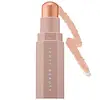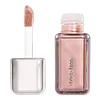What's inside
What's inside
 Key Ingredients
Key Ingredients

 Benefits
Benefits

 Concerns
Concerns

 Ingredients Side-by-side
Ingredients Side-by-side

Mica
Cosmetic ColorantEthylhexyl Isononanoate
EmollientOctyldodecanol
EmollientPolymethyl Methacrylate
Sucrose Acetate Isobutyrate
C20-40 Alcohols
EmulsifyingTribehenin
EmollientParaffin
PerfumingPolyethylene
AbrasiveVp/Eicosene Copolymer
Vp/Hexadecene Copolymer
Diisostearyl Malate
EmollientCera Microcristallina
Emulsion StabilisingCaprylyl Glycol
EmollientPhenoxyethanol
PreservativeTocopheryl Acetate
AntioxidantHexylene Glycol
EmulsifyingTocopherol
AntioxidantIsostearyl Alcohol
EmollientAscorbyl Palmitate
AntioxidantMalic Acid
BufferingCalcium Sodium Borosilicate
Synthetic Fluorphlogopite
Calcium Aluminum Borosilicate
Polyethylene Terephthalate
Acrylates Copolymer
Silica
AbrasiveTin Oxide
AbrasiveCI 77891
Cosmetic ColorantCI 77491
Cosmetic ColorantMica, Ethylhexyl Isononanoate, Octyldodecanol, Polymethyl Methacrylate, Sucrose Acetate Isobutyrate, C20-40 Alcohols, Tribehenin, Paraffin, Polyethylene, Vp/Eicosene Copolymer, Vp/Hexadecene Copolymer, Diisostearyl Malate, Cera Microcristallina, Caprylyl Glycol, Phenoxyethanol, Tocopheryl Acetate, Hexylene Glycol, Tocopherol, Isostearyl Alcohol, Ascorbyl Palmitate, Malic Acid, Calcium Sodium Borosilicate, Synthetic Fluorphlogopite, Calcium Aluminum Borosilicate, Polyethylene Terephthalate, Acrylates Copolymer, Silica, Tin Oxide, CI 77891, CI 77491
 Reviews
Reviews

Ingredients Explained
These ingredients are found in both products.
Ingredients higher up in an ingredient list are typically present in a larger amount.
Caprylyl Glycol is a humectant and emollient, meaning it attracts and preserves moisture.
It is a common ingredient in many products, especially those designed to hydrate skin. The primary benefits are retaining moisture, skin softening, and promoting a healthy skin barrier.
Though Caprylyl Glycol is an alcohol derived from fatty acids, it is not the kind that can dry out skin.
This ingredient is also used as a preservative to extend the life of products. It has slight antimicrobial properties.
Learn more about Caprylyl GlycolCi 77491 is also hydrated iron III oxide. It's sole purpose is to give a red/pink hue to products.
Iron III oxides are classified as inorganic chemicals for coloring.
Synthetically created Ci 77491 is considered safer than those naturally found. This is because the synthetically created version may contain less impurities. Iron oxides are generally non-toxic and non-allergenic.
Learn more about CI 77491Ci 77891 is a white pigment from Titanium dioxide. It is naturally found in minerals such as rutile and ilmenite.
It's main function is to add a white color to cosmetics. It can also be mixed with other colors to create different shades.
Ci 77891 is commonly found in sunscreens due to its ability to block UV rays.
Learn more about CI 77891Mica is a naturally occurring mineral used to add shimmer and color in cosmetics. It can also help improve the texture of a product or give it an opaque, white/silver color.
Serecite is the name for very fine but ragged grains of mica.
This ingredient is often coated with metal oxides like titanium dioxide. Trace amounts of heavy metals may be found in mica, but these metals are not harmful in our personal products.
Mica has been used since prehistoric times throughout the world. Ancient Egyptian, Indian, Greek, Roman, Aztec, and Chinese civilizations have used mica.
Learn more about Mica